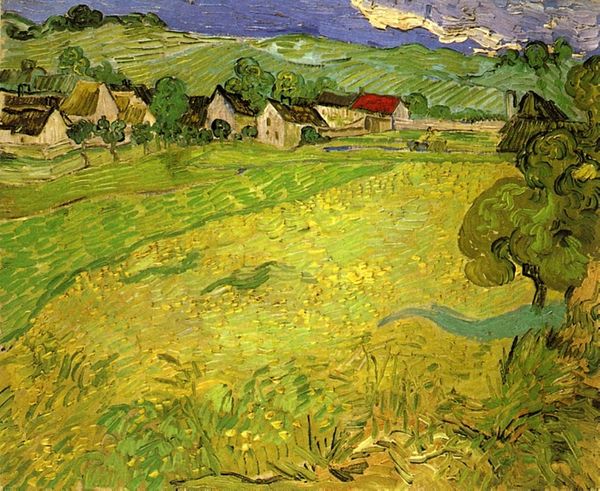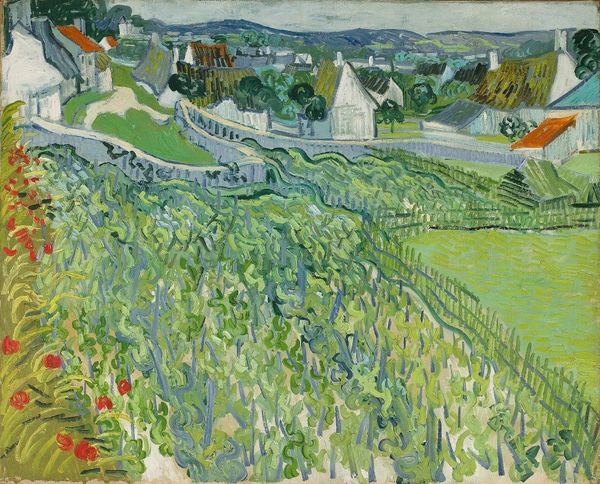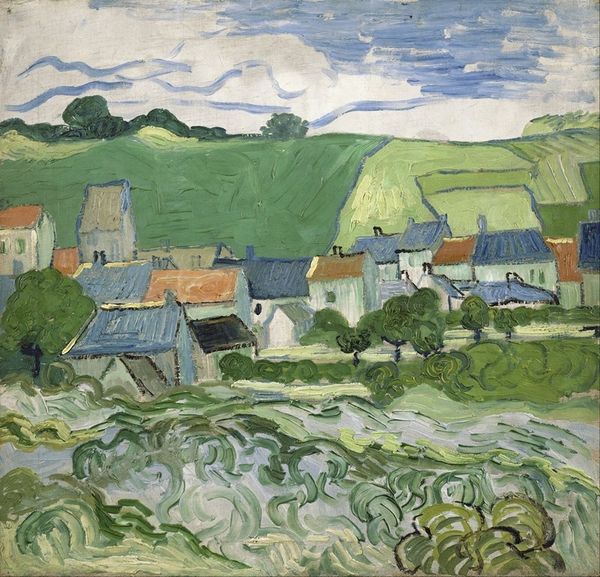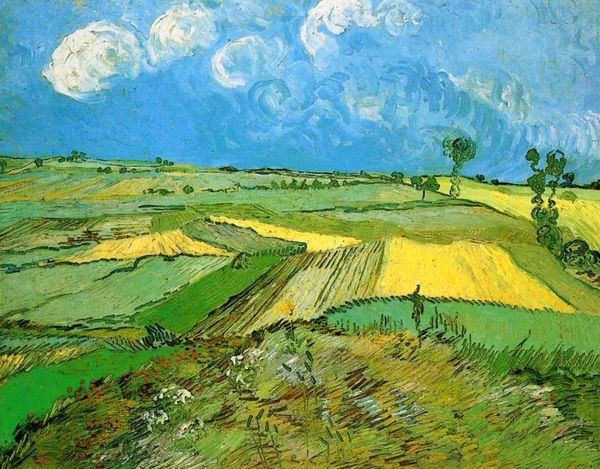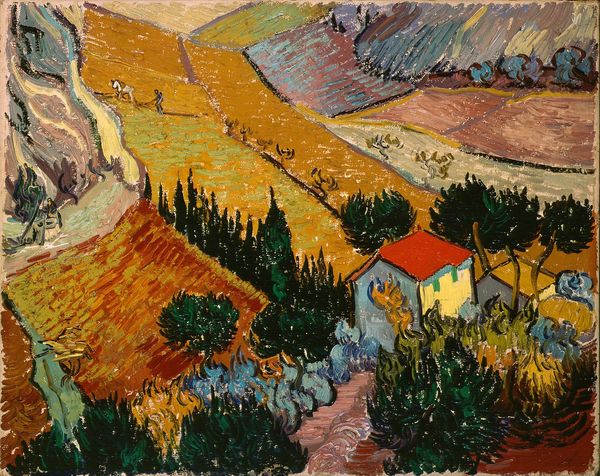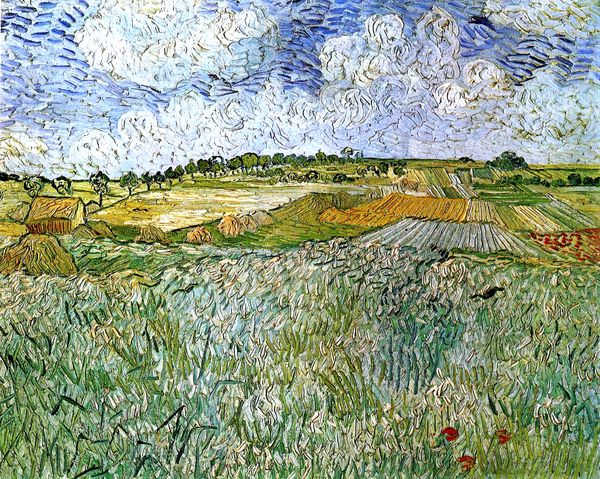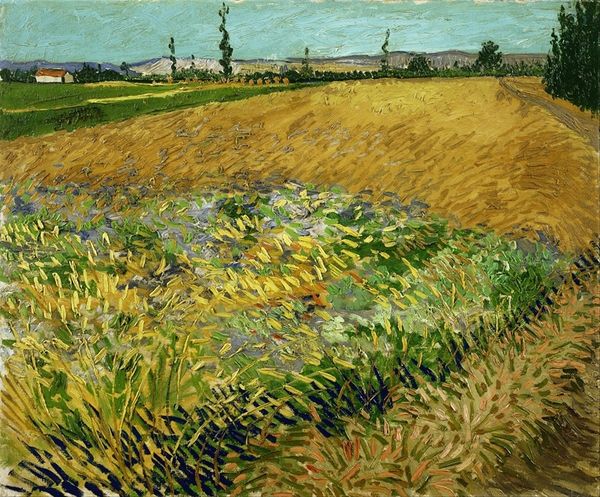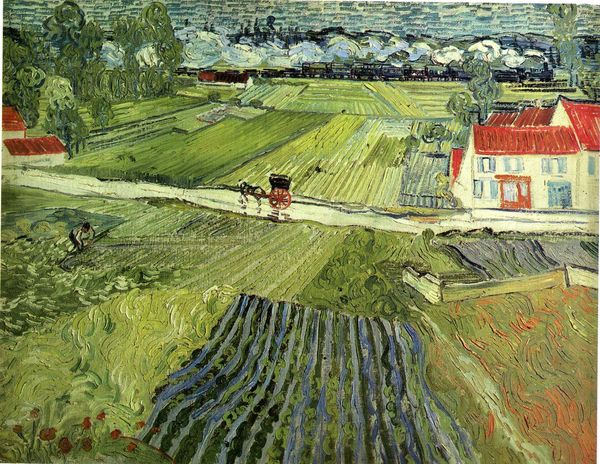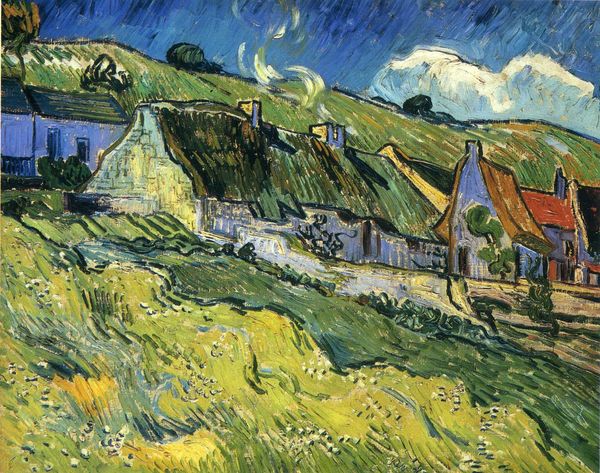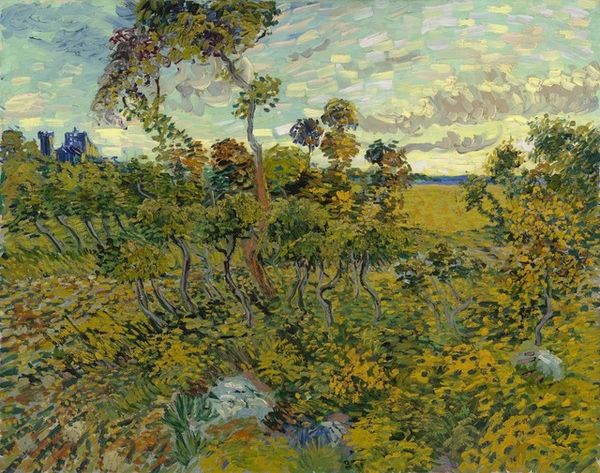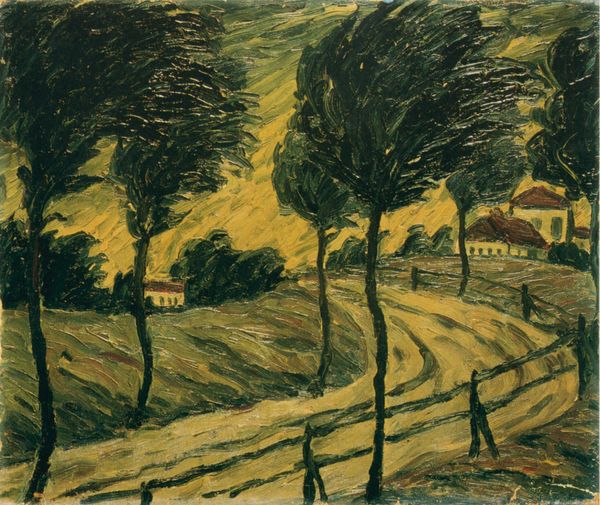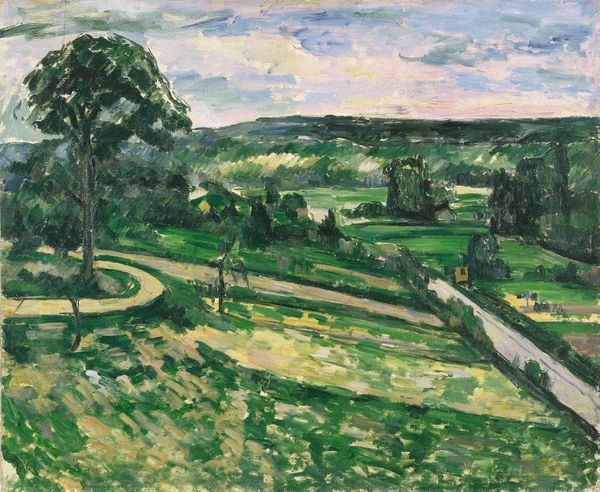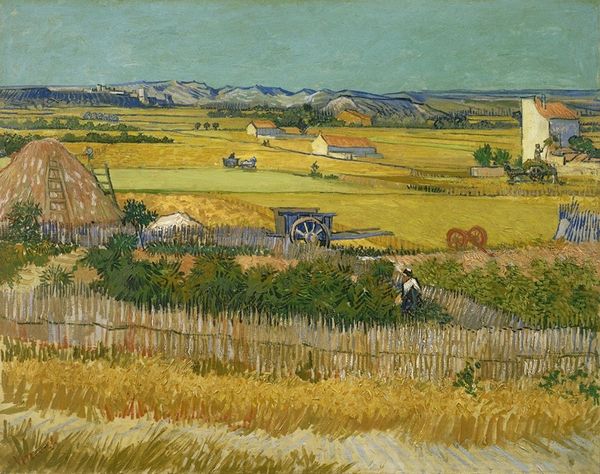
plein-air, oil-paint
#
dutch-golden-age
#
impressionism
#
plein-air
#
oil-paint
#
landscape
#
impressionist landscape
#
handmade artwork painting
#
expressionism
#
post-impressionism
Copyright: Public Domain: Artvee
Curator: Editor: Here we have Van Gogh's "View of Vessenots Near Auvers," created in 1890 using oil paints. The vibrant field of yellow flowers immediately captures my attention; it almost feels overwhelming in its brightness. What can you tell me about this work? Curator: It's tempting to focus on the expressive qualities of Van Gogh's brushstrokes, but let's consider the material conditions of its making. What was the availability of pigments like at this time? How did that affect the cost, and thus accessibility, of the bright yellows dominating this landscape? Think of the labor involved in grinding and mixing those pigments. Editor: So you're saying the choice of yellow isn't just about aesthetics; it's tied to the means of production and perhaps Van Gogh’s resourcefulness? I hadn’t considered that. Curator: Exactly. And think about the commodification of landscapes. Van Gogh isn't just representing a scene; he's engaging with a long history of landscape painting as a desirable, marketable commodity. What does the "plein-air" technique signify here, regarding access to tools, landscape and mobility? Editor: Right, plein-air would suggest access to resources but maybe also reflects Van Gogh's connection to the working class. Curator: Precisely. His willingness to engage with a 'lowly' subject while working outside places labor at the heart of artistic expression, almost leveling hierarchies between what is considered high art and the simple act of creating it. What’s changed about where you'd center your own appreciation for this painting? Editor: I see the value in shifting focus away from just the artistic genius, towards acknowledging the materials, labor, and economic context that made the artwork possible in the first place. It enriches the entire understanding. Curator: Indeed. By focusing on the materiality, we get closer to the social reality embedded within the artwork, and challenge preconceptions about artistic creation.
Comments
No comments
Be the first to comment and join the conversation on the ultimate creative platform.
